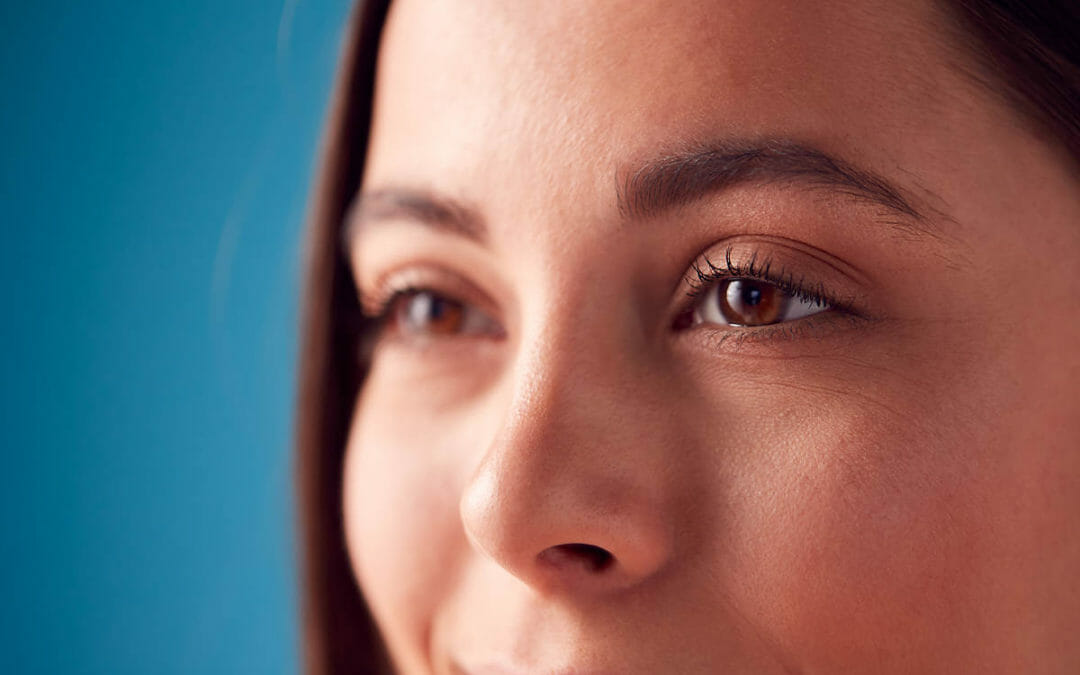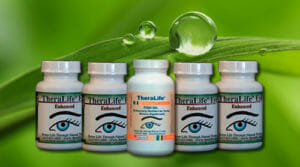The word sticking eyes can be described when wet liquid causes the eyelid to look as though stuck.
Sticking eyes occur when too much mucus or discharge from the eyes builds up on the eyelid and lashes, causing a crusty or sticky feeling. The condition itself is easy to treat with a clean washcloth, but it is likely the result of an underlying condition that may need additional treatment.
This condition occurs because of different eye ailments like styes, conjunctivitis or blepharitis. Occasionally there can be dry spots around eyes. It will explain what can cause a painful eye rash in adults and young children.
What Is Eye Mucus in sticking eyes
What people call “sleep” in your eyes is discharge. In your eyes, the mucus or discharge hardens because you’re not blinking. The reason it is called “sleep” in your eyes is that it crusts in the corners of your eyes as you sleep. Some also call it eye boogers, gunk, eye pus, eye mattering and goopy eyes.
Eye discharge consists of mucus, oil, skin cells, and other debris that builds up in the corner of the eyes as you sleep. It is secreted by the conjunctiva and meibum, an oily substance produced by the meibomian glands. This substance also helps in keeping your eyes moist.
Though a sticky eye on waking is not necessarily a cause for concern,
What are sticking eyes?
If you have allergies or a cold , you may have woken up with wet or crusted discharge in your eyes- sticky eyes. This discharge can cause your eyes to become so wet or gummy that it may feel like your eyes are glued shut. This symptom is also referred to as sticky eyes. If you have sticky eyes, you have accumulated discharge — a collection of skin cells, debris, oil, and mucus — in the corner of your eyes. It’s often not a cause for alarm, but if it becomes consistent and excessive, sticky eyes can be a sign of an infection.
It’s often not a cause for alarm, but if it becomes consistent and excessive, sticky eyes can be a sign of an infection.
Newborns with sticking eyes
Newborns with sticky eyes Sticky eyes are common in infants and newborns and make a popular reason for a visit to the pediatrician. Since babies’ tear ducts aren’t yet fully developed, it’s normal for some blockages to occur during their first years of life.
Your doctor will examine your baby closely to see if they have sticky eyes or infective conjunctivitis. All newborn babies with infective conjunctivitis must be referred to an eye specialist straight away for treatment.
Some babies will need surgery if the blocked tear duct doesn’t improve. This is done with a general anaesthetic, so the doctor can open the tear duct with a probe.
How do I manage my baby’s sticking eyes?
There are ways for you to help manage and treat your baby’s sticky eye. To help the blocked tear duct, your doctor may teach you a special massage. If your baby has sticky eye, it is important to keep their eyes clean. This will help prevent infection.
Symptoms of sticking eyes
Other symptoms you may experience with sticky eyes include: burning eyes dry eyes itchy eyes blurry vision pain light sensitivity red eyes flu symptoms inability to fully open your eyes.
What causes conjunctivitis?
What Causes Sticky Eye Discharge?
There are several reasons why your eyes may secrete a sticky discharge.
Infections or inflammations like conjunctivitis may be the source of your eye stickiness. Other common causes of excessive eye mucus are blepharitis (eyelid inflammation) and dry eye syndrome (DES).
It can also result from various forms of infection or an allergic reaction. As the most common strains of conjunctivitis are contagious, care needs to be taken in cleaning the eyes thoroughly and washing your hands well, to avoid it passing to other people.
Dry eyes causing sticking eyes
Two Most Common Dry Eye Symptoms: Burning eyes & sticky eyes
Squamous Blepharitis causing sticking eyes
Squamous cell blepharitis is another name for nonulcerative blepharitis. This form of blepharitis is usually caused by an allergic reaction.
Seasonal and perennial conjunctivitis causing sticking eyes
Seasonal and persistent allergic rhinitis is most commonly caused by these types of conjunctivitis and are often present with allergic rhinitis and asthma.
Pink Eye causing sticking eyes
Conjunctivitis is also known as red or pink eye. It usually affects both eyes and makes them: red burn or feel gritty produce pus that sticks to lashes itch water.
Conjunctivitis that produces sticky pus is contagious.
Allergic conjunctivitis causing sticking eyes
Allergic conjunctivitis is an eye inflammation caused by an allergic reaction to substances like pollen. Your eyes may become red, itchy, and watery.
It’s possible you’ve had conjunctis or a rash in your eyes. The symptoms vary based on the substance that is causing conjunctivitis.
Symptoms vary based on the substance. Pollen allergy occurs at various time points throughout the year. It is highly probable that pollen may cause other symptoms besides sneezes and nasal congestion. Allergic effects caused by dust mites and animal hair can occur throughout the year. Typically the eyes affect both eyes which can be worsened during the night and during the day. Sometimes people experience allergy to eye drops. Dermatoconsjunctivitis is a form of irritation which affects the eyelids, which can dry out or cause soreness.
A specialist may prescribe you eye drops or oral medications if the allergies become severe. Your eye doctor might also suggest using chilled, over-the-counter, artificial tears a couple of times a day.
Bacterial conjunctivitis causing sticking eyes
The most common reason your eye produces green or gray mucus is due to a bacterial eye infection. Bacterial conjunctivitis may cause your eyelids to be glued shut when you wake up in the morning.
Infective conjunctivitis causing sticking eyes
Infection by conjunctivitis can occur in many ways.
Giant papillary conjunctivitis causing sticking eyes
Giant papillary conjunctivitis (GPC) is when the inside of your eyelid gets red, swollen, and irritated.
Giant papillaria conjunctivitis is a condition in which a large number of people are prone to bleeding from glaucoma and other infections.
Irritant conjunctivitis
The irritable conjunctivitis has multiple possible causes. Causes can vary.
Seasonal and perennial allergic conjunctivitis
If there is a seasonal or persistent conjunctivitis, you might receive one or both of these drugs:
Spreading the infection
Having close contact is more likely to cause conjunctivitis than having recurrent infection in your body. So washing the hands thoroughly is important for people suffering from conjunctivitis infecting the body. You shouldn’t share pillows or towels with people who may have an infection.
Treating conjunctivitis
It does not normally need to be treated for conjunctival infections since symptoms generally clear within weeks. In the event a diagnosis is necessary, the treatment is dependent upon its cause.
When infections become serious, antibiotic eye drops are recommended.
The irritability will resolve once the cause is re-established.
Allergies
The allergic conjunctive disorder is usually controlled by antihistamines. It is advisable to avoid substances that trigger allergies.
If you are suffering from any eye pain, you can avoid contact lenses. Any residues on eyelids can easily be cleaned out using a cotton wool and water solution.
Bacterial Infection
Treatment will depend on the cause of your conjunctivitis. If it’s a bacterial infection, you might be prescribed antibiotics . But these will not work if it’s caused by a virus (viral conjunctivitis) or an allergy.
Antihistamine eye drops
You can buy an antihistamine eyedrop from a pharmacy or drug store without a prescription. Always comply with manufacturer’s instructions. It is possible that antihistamine drops are inappropriate for pregnant women. Talk with a doctor for guidance.
Self care
The easiest way to cure infectious conjunctivitis is to take a doctor’s advice. This information is meant to ease your discomfort
Do not wear contact lenses until your eyes are better. It’s also important to thoroughly clean and care for your contact lenses to prevent an infection.
Eye problems self-help guide
Tell me the best way to deal with a chronic disease that can lead to a severe illness and require medical assistance.
There are things you can do to help ease your symptoms.
Boil water and let it cool down before you gently wipe your eyelashes to clean off crusts with a clean cotton wool pad (1 piece for each eye). Hold a cold flannel on your eyes for a few minutes to cool them down.
There are things you can do to help ease your symptoms. Boil water and let it cool down before you gently wipe your eyelashes to clean off crusts with a clean cotton wool pad (1 piece for each eye). Hold a cold flannel on your eyes for a few minutes to cool them down.
When to seek medical advice
Conjunctivitis is a serious problem and is not attributed to contact lens wearers. Your doctor may be able to determine if the symptoms are triggered by something deeper.





